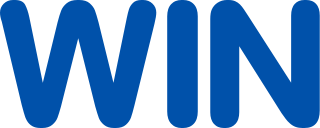| Ten HD | |
|---|---|
 | |
| Launched | 16 December 2007 – 25 March 2009 16 December 2007 – 1 January 2009 (breakaway) 2 March 2016 (revival) |
| Network | Network Ten |
| Owned by | Ten Network Holdings (CBS Corporation) |
| Picture format | 1080i (HDTV) 16:9 |
| Slogan | Turn on 10 |
| Country | Australia |
| Language | English |
| Broadcast area | Sydney, Melbourne, Brisbane, Adelaide, Perth, Darwin, Northern NSW & Gold Coast, Regional QLD, Southern NSW & ACT, Griffith, Regional VIC, Mildura, Tasmania, Eastern SA, Regional WA |
| Replaced | Ten (HD simulcast) |
| Sister channel(s) | Ten Eleven One TVSN Spree TV |
| Website | tenplay.com.au |
Availability | |
| Terrestrial | |
| Freeview Ten metro (virtual) | 13 |
| Freeview WIN (except Northern NSW)regional (virtual) | 80 |
| Freeview WIN Northern NSW regional (virtual) | 50 |
| Cable | |
| Foxtel (virtual) | 210 |
Ten HD (stylised as TEN HD) is an Australian free-to-air television channel that was originally launched on 16 December 2007 on channel 1. The channel was available to high definition digital television viewers through Network Ten owned-and-operated stations. The multichannel broadcast live sport, entertainment, films, documentaries, science fiction and news. [1] The channel ceased broadcasting on 25 March 2009, and the following day was replaced by One. Following the government's decision to remove the SD Primary Channel limitations, the channel returned as a HD simulcast on 2 March 2016 on channel 13. [2] [3]
Free-to-air (FTA) are television (TV) and radio services broadcast in clear (unencrypted) form, allowing any person with the appropriate receiving equipment to receive the signal and view or listen to the content without requiring a subscription, other ongoing cost or one-off fee. In the traditional sense, this is carried on terrestrial radio signals and received with an antenna.
A television channel is a terrestrial frequency or virtual number over which a television station or television network is distributed. For example, in North America, "channel 2" refers to the terrestrial or cable band of 54 to 60 MHz, with carrier frequencies of 55.25 MHz for NTSC analog video (VSB) and 59.75 MHz for analog audio (FM), or 55.31 MHz for digital ATSC (8VSB). Channels may be shared by many different television stations or cable-distributed channels depending on the location and service provider
High-definition television (HDTV) is a television system providing an image resolution that is of substantially higher resolution than that of standard-definition television. This can be either analog or digital. HDTV is the current standard video format used in most broadcasts: terrestrial broadcast television, cable television, satellite television, Blu-rays, and streaming video.
Contents
- History
- Origins
- Breakaway era
- 2016 revival
- Programming (2007-2009)
- News
- Sport
- Availability
- Original channel
- Revival channel
- Logo history
- References
On 2 March 2016, to make channel space for Ten HD, One's HD feed closed down and One was reduced to two standard definition (SD) feeds.













